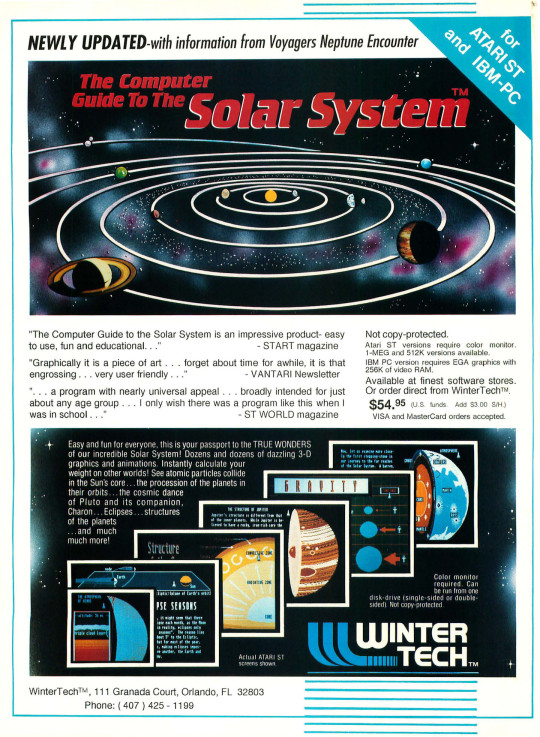#WINTERTECH
Explore tagged Tumblr posts
Text

USA 1990
22 notes
·
View notes
Text
Embracing the winter wonderland! Imagine snow-covered landscapes with solar sound barriers along the highways and railroads, not just reducing noise but harnessing the power of the sun. ❄️☀️ Green-tech meets snowy scenes for a sustainable and serene journey! 🌿 @ko-solar 🌿
Ko-Solar Web: https://www.ko-solar.com/
Facebook: https://www.facebook.com/solarsoundbarrier/
Instagram: https://www.instagram.com/ko.solar/
LinkedIn: https://www.linkedin.com/company/ko-solar/
Threads: https://www.threads.net/@ko.solar
Tumblr: https://www.tumblr.com/ko-solar
Twitter: https://twitter.com/SolarSoundWall
TikTok: https://www.tiktok.com/@ko.solar
YouTube: https://www.youtube.com/channel/UCvCAByQoq-9s1Pe9rf0dN0A/featured?view_as=public
Google: Ko-Solar - Google Search
#WinterTech#SolarHighway#environment#sustainablefuture#transportation#solarenergy#solarpower#energy#KoSolar#greenenergy#renewableenergy#GreenTransportation#ClimateAction#Sustainability#highway#road#solarbarrier#solarsoundbarrier#solarnoisebarrier#highwaysolarenergy#transportationbasedsolar#SolarSoundWall#Ko-Solar
0 notes
Text
Orbits: Voyage Through the Solar System v2.1 & v3.01 (DOS, WinterTech, 1991/1994)
You can play them in your browser here - you'll have the option to choose which version. Tip: after selecting one, click the emulated screen to enable mouse controls, and press Esc to disable them and release the mouse.


#internet archive#in-browser#dos#dos games#game#games#video game#video games#videogame#videogames#computer game#computer games#educational game#educational games#obscure game#obscure games#obscure media#space#science#kids science#astronomy#solar system#planets#1994#1990s#1990's#90s#90's
4 notes
·
View notes
Text
ELECTRONIC WARM BAG POWER CABLE
STOCK AVAILABLE !!!
FOR PRICE AND MORE INFORMATION FOLLOW US ON OUR WHATSAPP CHANNEL :
For any Query:
☎ : +91-9899391155, +91-9910772484
#warmbagpowercable #HeatingAccessories #winterwarmth #techinnovation #electricheat #WinterEssentials #CozyComfort #techgadgets #StayWarm #coldweathergear #techwarmth #PortableHeat #powercable #WinterReady #electricwarmth #GadgetEssentials #WinterTech #warmup #TechAccessories #StayCozy
0 notes
Note
Fic idea: Heisenberg x Ethan. Maybe Ethan actually takes Karl's offer to join to him and feelings come to light?
Heisenberg: Join me.
Ethan:

#wintertech#im rolling with it as a ship name despite not being hugely into it#karl heisenberg#ethan winters#Resident Evil Village
159 notes
·
View notes
Text
YALLLLLLL!!!!! Heisenberg X Ethan ship name.
First Contender: Wintersberg - 🌌
Second Contender: WinterTech - 🎇
GIVE YOUR VOTE NOW!
56 notes
·
View notes
Text
Playing with FHIR

The JP Morgan Healthcare conference descended on San Francisco last week along with severe rainstorms that helped to end California’s drought but drenched a lot of attendees running frantically from hotel to hotel.
Despite the inclement weather, an estimated 30,000 people were in town to learn about the major trends for the healthcare industry in 2017.
One of the main themes of the conference was how to improve patient engagement and care accessibility by leveraging technology. There were examples of how tele-health expands a patient’s choice on when and how they receive care and how mobile devices provide an “always-on” communication channel between patients and their care providers.
Technology is proving to be a vital component for a successful disruption of the healthcare industry and I believe that a lot of this innovation will come from start-ups that can approach problems with a fresh perspective. However, they will still need access to the existing healthcare system in order to gain any traction.
This brings me to the new FHIR standard.
FHIR stands for Fast Health # Resources (pronounced “fire”) and it was created by Health Level Seven International (HL7).
The goal is to provide the industry with an Application Programming Interface “API” for exchanging Electronic Health Records “EHR”. To write this in one, acronym-laden sentence – FHIR, created by HL7 is an open API for EHR. Pretty impressive if I have to say so myself.
Here at Appstem, we have started dipping our toes in the sand and working in FHIR sandboxes created by Epic, Cerner and AllScripts and our initial reaction is positive. We found that this HL7 version is easier to work with because it uses a modern, web-based suite of API technologies including an HTTP-based RESTful protocol, HTML and Cascading Style Sheets for user interface and JSON or XML for exchanging data.
In addition, each basic element of healthcare like patients, admissions, diagnostic reports and medications are accessed via their own resource URL. This allows the data to stay in its own silo while sitting on top of a super-fast highway with easy to understand road signs.
Let us know if you’re thinking of creating a mobile application that integrates with FHIR. We’re already enjoying our time in the FHIR sandbox but it’s always more fun with others.
#fhir#jpm17#health2con#digital health#mhealth#wintertech#healthcare#appstem#mobile#apps#hl7#interoperability#telehealth#sanfrancisco
0 notes
Photo

Happy Valentine's day! Life is better when we're going through it together 🎁 Photo by @klwsk #mujjo #dutchdesign #valentines #valentinesday #touchscreengloves #leathergloves #wintertech #techaccessories #couplesday
0 notes
Text
ResQ is Using Games to Fight Opioid Addiction: Interview with Dr. Paul Glimcher
ResQ is Using Games to Fight Opioid Addiction: Interview with Dr. Paul Glimcher
ResQ is Using Games to Fight Opioid Addiction: Interview with Dr. Paul Glimcher
Earlier this year at the Health 2.0 WinterTech Conference, the Robert Wood Johnson Foundation (RWJF) and Catalyst @ Health 2.0 launched the RWJF Opioid Challenge, an initiative aimed at bringing together healthcare and technology innovators to solve a growing epidemic of addiction in the United States. A panel of…
View On WordPress
0 notes
Text
RWJF Opioid Challenge: You Can Help
By CHELSEA POLANIECKI AND CHANLY PHILOGENE
Opioid overdoses are the leading cause of death for Americans under 50 years old. In fact, the majority of drug overdose related deaths involve an opioid. According to the National Center for Health Statistics, deaths from prescription opioids—drugs like oxycodone, hydrocodone, and methadone—have more than quadrupled since 1999. The U.S. is currently experiencing an opioid epidemic, as more than 2 million Americans have become dependent on, or abused prescription pain pills and street drugs. Substance misuse is not only affecting the users but also their families, friends, and the healthcare system as a whole.
Although improvements have been made to the way opioids are prescribed through clinical practice guidelines, the epidemic has continued to grow. The CDC has made several efforts to combat substance misuse and overdose but there is much more to be done, and you can help. The Robert Wood Johnson Foundation (RWJF) is committed to supporting those affected by this issue and launched the RWJF Opioid Challenge live, at Health 2.0’s Wintertech conference in January 2018. This innovation challenge calls for tech-enabled solutions that help identify resources, facilities, and educational content for support, as well as platforms for connecting patients, caregivers and peers for peer community.
RWJF has teamed up with Catalyst @ Health 2.0 to identify and incentivize the development of tech-enabled solutions that should aim to support affected individuals (e.g. opioid users, caregivers, peers, family, etc.) and connect them to relevant resources. Every individual faces a different set of challenges, meaning that needs for recovery can be unique and varied.* The challenge is calling on innovators, developers, entrepreneurs and other bright minds to create tools to support those affected by opioid misuse.
In Phase I of the challenge, innovators will develop and design tech-enabled solutions. The judges, who bring a wide range of expertise to the table, will evaluate the submissions to determine the five teams who will move onto Phase II. These finalists will be awarded $5,000 each to create a fully functional application or tool. The finalists will also have an opportunity to demo their technology in front of a captivated audience of 2,000 investors, provider organizations, health plans and members of the media at the Health 2.0 Annual Fall Conference! With $100,000 in total prizes, we encourage innovators to put their best foot forward and create innovative solutions that will help impact the lives of those affected by opioid misuse.
Check out the challenge website to learn more and pre-register to apply to the RWJF Opioid Challenge by March 22nd. Join the fight today and help support and connect those individuals and their families affected by opioid misuse.
*This is not an exercise to develop tools for specific disease interventions or technologies for clinical therapy decision-making.
Chelsea Polaniecki is a Program Manager and Chanly Philogene is an Intern at Catalyst @ Health 2.0.
Article source:The Health Care Blog
0 notes
Text
Yep, it's been decided. Tech (Carolina) basically walloped me in the muse and said if I won't write her and Bucky together, she's not playing ball anymore. She and Buck are together. Bucky just looked at me and said "Don't argue with the lady. She'll mess with your computer.". Looks like my new ship, the SS WinterTech is going to sail with or without me. In case you wanted to know what Tech looks like: Physical description - Hair: Short, choppy light brown. Still growing in. Follows scar patterning. Skin: Pale Eyes: Blue Nose: Small, lump from being broken in explosion Mouth: Full pout, lower lip marred by scarring. Ears: Small, pinned back. Chin/neck: double chin. Slightly thicker neck. Shoulders: Broad, but slender.
0 notes
Text

ELECTRONIC WARM BAG
STOCK AVAILABLE !!!
FOR PRICE AND MORE INFORMATION FOLLOW US ON OUR WHATSAPP CHANNEL :
For any Query:
☎ : +91-9899391155, +91-9910772484
#heatedbag #TechInnovation #WarmthOnTheGo #gadgetlove #WinterEssentials #heattech #PortableWarmth #techgear #wintergadgets #staywarm #electronicheating #techaccessories #InnovationInWarmth #GadgetLovers #wintertech #electronicsforcomfort #staycozy #WinterReady #techinwinter #electronic #electronicwarmbag
0 notes
Note
How do you think Karl/Ethan's dynamic would work?
This is very difficult to answer because I tend to keep my ideas and fic as canon compliant as I can and Ethan/Karl just...ain't gonna happen lol. So, for the sake of this ask, I'll just pretend that Mia and Rose don't exist and Ethan is just special in his own way w/ regenerative powers as a result of the metamycete infection.
As a pair, they're very verbal. Ethan's quick wit and sarcasm plays off against Karl's hot-headed nature very well and they can engage in some brutal verbal sparring. Physical sparring isn't a done thing as there's no comparison in terms of strength or ability.
When meeting the other lords, Ethan has a dislike of Beneviento since he has a 'thing' about dolls. Much to Karl's chagrin, Ethan shares a more positive relationship with Dimitrescu than anyone could have expected. He is respectful of her and she tolerates him, often commenting that he could do much better than the 'child' he is currently with. Pisses Karl off so fucking much but Ethan is always quick to point out that he's content where he is.
#not really sure where else togo with this as i havent thought much of it#ethan winters#karl heisenberg#resident Evil village#wintertech#is the ship name im going with#lmaooo sorry for the shit answer
83 notes
·
View notes
Text
We’re a featured Partner at The Health 2.0 WinterTech Conference

Appstem is excited to be a featured partner at the Health 2.0 WinterTech Conference next month. The event is being held January 11th in San Francisco at the Julia Morgan Ballroom.
Health 2.0 WinterTech will be held during the nation's leading investment mecca, JP Morgan Week in San Francisco. WinterTech is the place for insider insights on investing trends in health care technology. By bringing together top tech companies, VCs, entrepreneurs, policy makers, and more, the third annual event will highlight the new and unique opportunities available in the fast-rising digital health landscape.
Appstem will be exhibiting at the conference, please swing by to say hello and hear how we’re helping startups and leading healthcare companies with their mobile and web projects.
For more information or to register visit: https://events.bizzabo.com/wintertech2017/
Appstem
657 Mission St. Suite 402
San Francisco, CA 94105
www.appstem.com
Contact:
John Mavraides, VP of Business Development
415.956.7400
#health2con#wintertech#digitalhealth#mhealth#startups#jpmorganweek#appstem#mobile#apps#healthcare#web
0 notes
Photo

Ready for the Cold ❄️ - 📸 Shot by @klwsk #mujjo #leathergloves #touchscreengloves #wintertech #leatheraccessories #leathercase #leatherwalletcase #dutchdesign
0 notes
Text
Mark Ganz — What’s Your Purpose in Health Care?
Last week at Health 2.0’s Wintertech, held during “health care’s money week” JP Morgan in San Francisco, Cambia CEO Mark Ganz gave a remarkable talk–one you wouldn’t expect from the leader of a big health insurer. He called out pharma for price gouging, he asked what consumers would think about the conversations we are having, but mostly he asked people to think about why they were working in health care. And he did it with a deeply personal set of stories. Everyone there found it very moving and very important, so I wanted to share it with the THCB audience. It’s well worth your time. — Matthew Holt
Article source:The Health Care Blog
0 notes